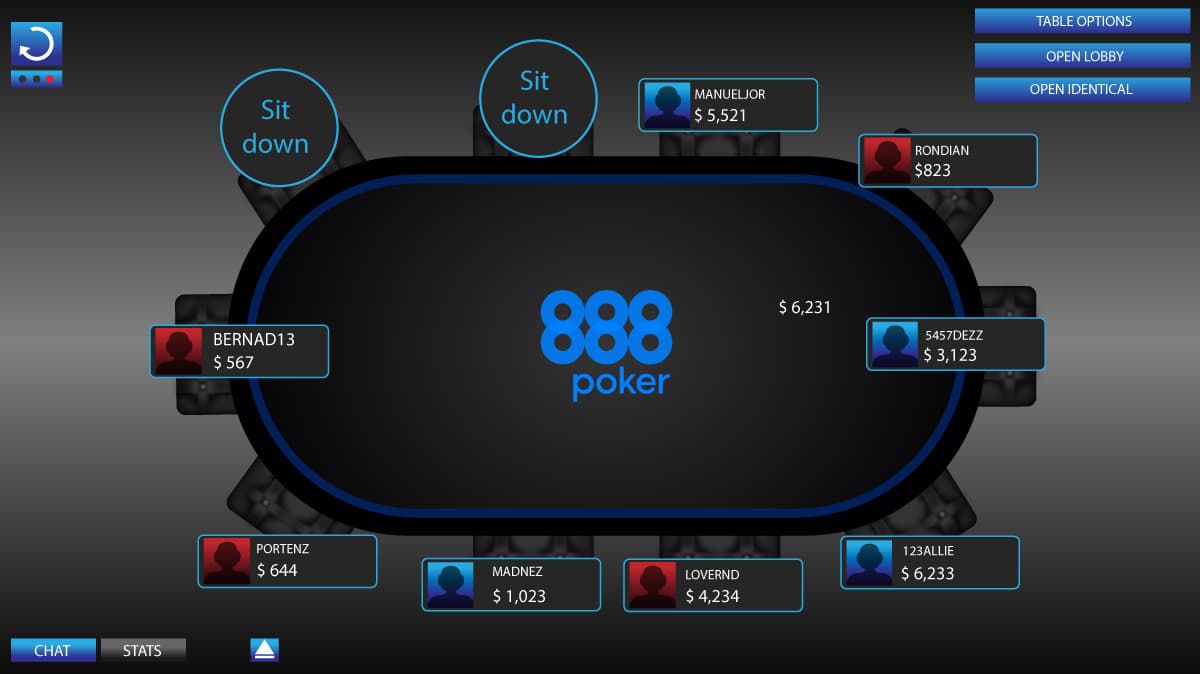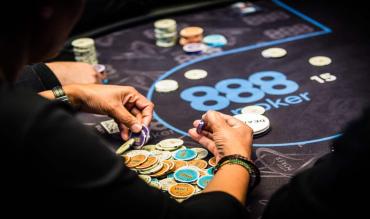Poker is a game full of history, interesting characters, and a deep cultural connection to the American West. It’s a game of risk and reward, patience and aggression, and a social game that brings people together. There’s a bit of edginess and a connection to the past, and that attracts many to the game. The chance at winning some cash is a pretty big draw too.
From pistols to politics to prison, poker players have seen it all. Here’s a look at some interesting facts and figures from the game.
Table of Contents
History of Poker
-
1845 – The first year that poker is mentioned in Hoyle's Games, the bible of card games. The book didn’t have many nice things to say about the game, however. And as James McManus notes in his book Cowboys Full: The History of Poker, even by 1864, the Hoyle stated: “Success on playing the game of Poker depends on luck and energy rather than skill. It is absolutely a game of chance, and there are easier ways of cheating, or playing with marked cards than any other card game.”
- Aug. 2, 1876 – The date famed lawman, gunslinger, and cardplayer Wild Bill Hickok was shot in the back and killed at Nuttal & Mann's Saloon in Deadwood in the Dakota Territory (now the state of South Dakota). He was allegedly holding A♠ A♣8♠8♣ when he was killed, forever known as “Dead Man’s Hand.”
- January 1, 1998 – The first real-money online poker game is dealt. Early games were glitchy at times but helped spark a multi-billion-dollar industry.

- March 30, 2003 – The World Poker Tour debuted on the Travel Channel, showing hole cards for the first time on American television. Gus Hansen won the Five Diamond World Poker Classic at the Bellagio for $556,460. The show became an instant hit and propelled the game’s popularity.
- May 23, 2003 – The date Chris Moneymaker won the World Series of Poker Main Event after gaining entry through a $39 online qualifier. He took home the gold bracelet and $2.5 million in cash. The win helped spark the poker boom by showing an amateur could win on poker’s biggest stage.
Poker By Numbers
-
4 – Number of players who have won the WSOP Main Event back-to-back: Johnny Moss, Doyle Brunson, Stu Ungar, and Johnny Chan.
- 2 – Number of players who have won the WSOP Main Event three times – Johnny Moss and Stu Ungar. Johnny Chan came close to three in a row after winning in ‘87 and ‘88. In 1989, that attempt was foiled when he lost heads-up to Phil Hellmuth.
- 6 – The per cent of being dealt a pocket pair in a game of Texas Hold’em.
- 12 – Percentage (actually 11.7551 per cent) of hitting a set on the flop while holding a pocket pair.
- 15 – The record number of WSOP bracelets won by Phil “The Poker Brat” Hellmuth. His most recent came in 2018 when he won a $5,000 No Limit Hold’em event for $485,082.
- 0 – The number of WPT titles won by Phil Hellmuth, although he has almost $1.6 million in winnings on the tour and five final table appearances. That figure includes two third-place finishes and one runner-up. A title is on his bucket list.
- 7 – The number of players at the first WSOP in 1970. Johnny Moss was elected champion as the tournament format wasn’t introduced until a year later. A silver cup was his prize, and the championship gold bracelet wasn’t added until 1976.
- 21 – The age Phil Ivey turned when he started using his real name (and not a fake ID) at poker rooms in Atlantic City. He has since gone on to win 10 WSOP bracelets and one WPT title.
- 20 – The number of cards used in early versions of the game with only four players. The 52-card deck we know today began being incorporated in the early-1800s.
Show Me the Money!
-
$12 million – The largest WSOP Main Event payout ever, won by Jamie Gold in 2006. The event attracted 8,773 players.

- $8.5 million – The amount the film Rounders made on its opening weekend in September 1998. The film, starring Matt Damon and Ed Norton, cost $12 million to produce. The movie was one of the first to show a realistic look at poker on the felt as well as the New York underground poker scene. It ultimately made a profit, grossing $22.9 million. The film gained a nice cult following after it appeared on cable TV and DVD.
- $4,000 – The amount poker-playing author James McManus received in 2000 as an advance to cover the Ted Binion murder trial for Harper’s magazine. The son of Benny Binion was allegedly murdered by a stripper and her boyfriend. McManus used that money to play in the WSOP Main Event and finished fifth for $247,760. He chronicled the events in the book Positively Fifth Street: Murderers, Cheetahs, and Binion's World Series of Poker, which was released in 2003 to wide acclaim.
- $120 million – Poker seems to be on a mini-boom in recent years, and this number might attest to that fact. This amount is the poker revenue generated in Nevada in 2018, the largest haul in five years despite a declining number of rooms.
- $2 million – The amount Johnny Moss is alleged to have won from Nick “The Greek” Dandalos in a heads-up poker match in 1949. The Texan battled Dandalos for five months, and some estimates put that total at more than $4 million. In recent years, there have been doubts about the game, but Jack Binion has commented that it did indeed happen at the Flamingo.
Poker People & Places
-
Richard Nixon – The former U.S. president was said to be quite a rounder, pocketing about $150 a month while playing in the Navy – a nice haul in the 1940s. While he is indeed not the only politician, or president to play poker, he’s probably the most successful. Rumour has it that he used $5,000 in winnings to finance his first run for Congress in California in 1946.
- American Civil War – Soldiers were known to play while awaiting the next battle. It was a way to pass the time, and five-card stud was a regular part of military camp life.
- Detroit – Despite its name, Omaha Hold’em was apparently first played in this city in the 1970s. It was later given the moniker in Las Vegas, and the town in Nebraska was used from a more obscure game in which a player had to use exactly two of his cards. There are no casinos in Nebraska, but a quick trip across the state lines from Omaha and one will find several in Council Bluffs, Iowa.
- Atlantic City – This city was the place to play on the East Coast for much of the 1980s and 1990s. The poker scene was big at the Taj Mahal (featured in the film Rounders) and hosted significant events like the U.S. Poker Championship. Poker remains big today at properties like the Borgata, Harrah’s, Bally’s, and Tropicana with smaller rooms at Ocean and Golden Nugget.
- Mark Twain – The author of classics like The Adventures of Tom Sawyer and Huckleberry Finn was a regular cardplayer as a young riverboat pilot along the Mississippi. The game even popped up in his stories occasionally, but he was cautious about who he played. Crooks and cheats were known to frequent the ships looking for easy marks.
- Texas – The first game of Hold’em was alleged to have occurred in the south Texas town of Robstown and was recognised by the state’s legislature in 2007 as the birthplace of Texas Hold’em. The game had moved as far north as Dallas by the 1930s before eventually making its way to Las Vegas and other parts of the country.
- Barbara Enright – The first woman to win a WSOP bracelet in an open event and the only to make a final table in the $10,000 Main Event. She’s won three bracelets and has $1.7 in live tournament winnings.
- Tombstone, Arizona – Legend has it that this was the home of the longest poker game ever. The game took place at the Bird Cage Theater and according to the theatre’s website, “was played continuously twenty-four hours a day for eight years, five months, and three days. As much as $10,000,000 changed hands during the marathon game, with the house retaining 10 per cent.” Tombstone offers a real glimpse of the Old West where shootouts were frequent, and the Bird Cage was one of toughest, “wickedest” nightspots around. Some of the players in that game including famous Old West figures Doc Holliday, Bat Masterson, Diamond Jim Brady, George Hearst, and Adolphus Busch.
- Herbert O. Yardley – This World War I crypto-analyst and code breaker icon in U.S. Intelligence, offered stories of his own exploits at the table as well as strategy and maths behind the game in his 1957 work, The Education of a Poker Player.


